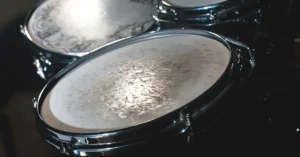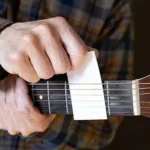Drum heads should be replaced depending on many things, which include how frequently you play them. These replacements are also based on the amount of intensity there is while you play drums. People play different music on drums, where some are more intense than others, and where replacement is preferred more. So, if you’re someone who regularly does gigging with rehearsals, then changing every other month is fine. For recreational playing, you may need replacement every six months, because the drum heads won’t need more.
Are you still confused about how often you need to replace drum heads? Well, not anymore, as this blog is for you to understand everything about replacing drum sets.
What To Replace Batter Heads (Toms, Snare, Bass)?
These are on the drums for you to strike directly with your stick, which can also create the most damage. Wear and tear in these kinds of drums is the most common, as they are vulnerable to it.
Active Drummers:
If you’re an active drummer working with batter heads, then your drum heads will need to be replaced every 6-8 weeks.
Casual Drummers:
For casual drummers who only play once in a while, replacing the drums every few months is fine.

What About Resonant Heads (Bottom of Toms, Snare)?
You won’t need to change these heads a lot, as they mostly last longer, which is because they just vibrate.
General Guideline:
Every time you change the Batter heads, you can replace these as well, which works for both.
Snare Side Head:
These heads are thin, which makes them vulnerable to wear and tear, as that may happen.
Make sure to change these heads every 6 weeks, or less if you don’t use them that often, so it depends.
Bass Drum Resonant Head:
Bass drums’ resonant heads don’t experience wear and tear, mostly, which makes them last longer. So replacing them once in a while is fine for these, because they will still work without it.
What Factors Influence Replacement Frequency?
Many factors influence replacement frequency, which can be understood from below:
Playing Style:
It is also dependent on your playing style to decide whether your drum heads need to be replaced often or not.
Music Genre:
Each drummer may play different genres of music, where some put more pressure on the drums, asking for replacements. So figure out if the music genre you’re playing puts pressure on the drum heads.
Head Type:
There are different kinds of head types available for drums, where thicker ones last longer without replacement. Whereas the thinner head types are more likely to be replaced because of the way they can be damaged.
Tuning
If you tune a lot while tensioning the head a lot, there are chances it won’t last long enough.
Environmental Factors:
Another factor that can affect the drum heads is the environment, even if you don’t believe it. The environment does, in fact, affect the drum heads, as humidity ruins their elasticity.
What Are The Signs It’s Time To Replace?
Are you wondering if it’s really time to replace your drum heads or not? Then understand this all from below:
Visible Damage:
This one is pretty simple, because if you see that your drum heads are visibly damaged, then it’s time to replace them.
Here are some of the visible signs that the drum heads are damaged:
- Pits
- Dents
- Tears
- Stretching
Loss of Tone:
The usual sound you hear while playing drums may become lifeless after the drum head is damaged, which is a sign.
Inconsistent Tuning:
If the drum isn’t suddenly producing the sound you desire, then it could be a sign that you need to replace it as soon as possible.
Head Stretching
If the drum heads are overstressed, then they can stretch unevenly sometimes, which is a sign. Avoid playing the drum in that condition, as the tuning won’t be as good until it’s replaced.
Tips for Extending Drum Head Life:
Play with proper technique:
Make sure to play drums the right way, while hitting the surface at the right angle to avoid damage.
Use the right head for the job:
Choose the right head to do the job for your playing style, so you can avoid damaging the drum head.
Tune your drums properly:
Always tune your drums properly, as over-tightening the heads can cause issues like these:
- Stretching
- Premature wear
Protect your heads:
To protect your drum heads, you can use things like:
- Drum rug
- Dampeners
Consider power dot heads:
You can also use these kinds of heads as they provide extra durability, mostly, which is a good thing to avoid replacing a lot.
Conclusion
Drum heads need to be replaced depending on many things, including the intensity at which you play. Another factor is that different kinds of drum heads need to be replaced according to their need. Many factors affect the condition of these drum heads, which leads to more frequent replacements.
FAQs
Q – When do I replace my resonant drum head?
A – You’ll need to replace your resonant drum head every two to three times the batter head is changed.
Q – Where do I get the best drum heads in the trycity?
A – There’s no doubt that the best drum sets come from Amrit Music, which is the best in the tricity.
Q – Do I need to replace my bass drum head every other month?
A – No, you don’t need to replace any of your drum heads that frequently, as once every 6 months is fine for the bass ones.
Q – Why should I choose Amrit Music as the best place for drum heads?
A – You should choose Amrit Music as the best for drum heads because we work like this:
- High-Quality Materials
- Meticulous Craftsmanship
- Customization Options
- Wide Product Range
- Customer Satisfaction




